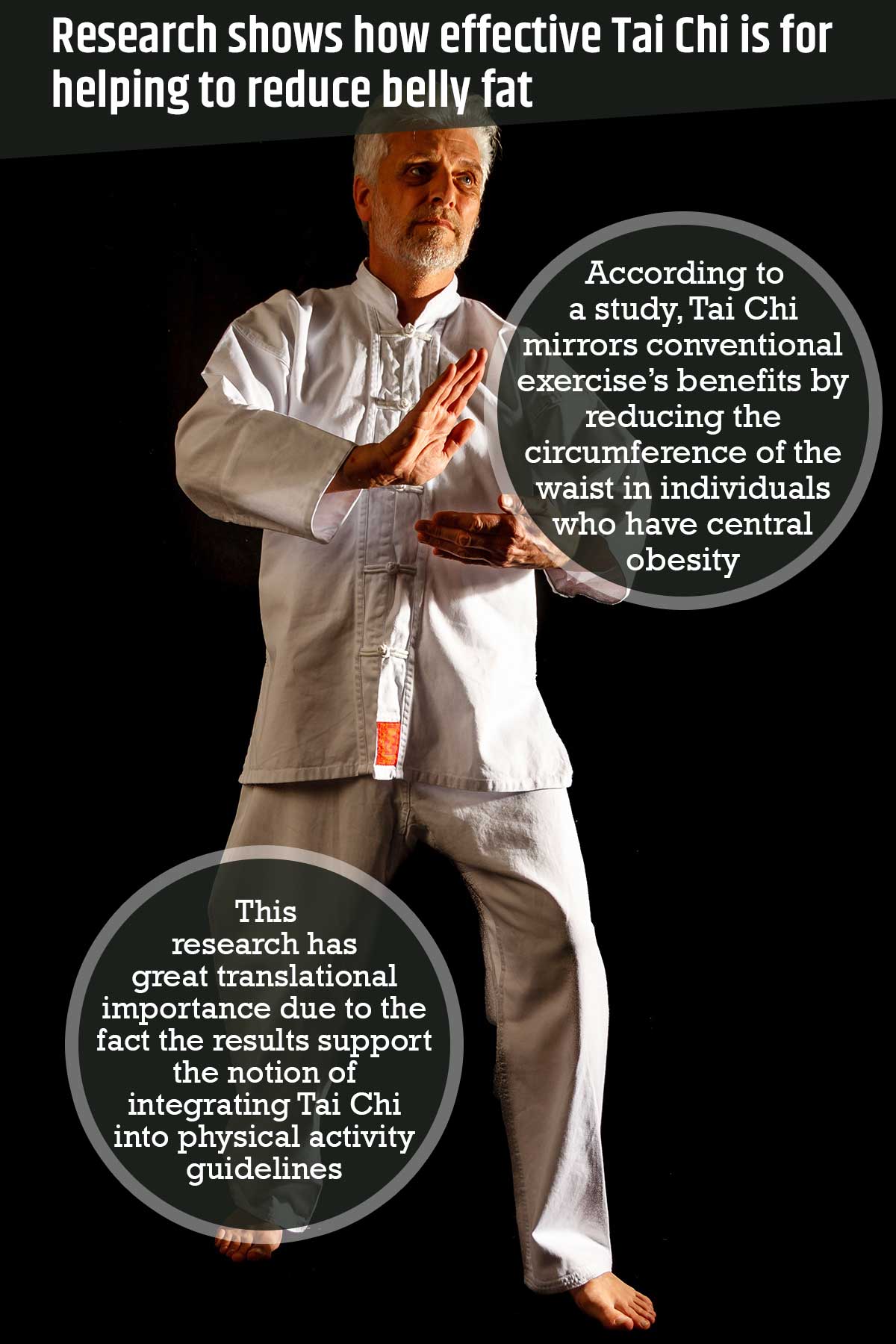According to a study, tai chi mirrors conventional exercise’s benefits by reducing the circumference of the waist in middle-aged and older individuals who have central obesity.
Abdominal obesity is a significant manifestation of metabolic syndrome, generally characterized by a group of cardiometabolic risk factors, such as central hyperglycemia, dyslipidemia, obesity, low HDL cholesterol levels, and high blood pressure, which all increase cardiovascular disease and type 2 diabetes risk.1✅ JOURNAL REFERENCE
DOI: 10.7326/M20-7014
The 543 individuals participating in the study were randomly assigned in an even ratio to a no-exercise control group, a conventional exercise group that consisted of strength training and aerobic exercise, and a tai chi group for 12 weeks.
The main desired end result was circumference of the waist. Secondary outcomes were BMI, body weight, HDL cholesterol levels, triglyceride, and levels of fasting plasma glucose.
The study results indicate that tai chi can be an effective method for managing central obesity. This research has great translational importance due to the fact the results support the notion of integrating tai chi into physical activity guidelines globally for older as well as middle-aged individuals who have central obesity.
This could be because of a combination of movement and the calming effect of tai chi, which helps to reduce cortisol levels in the body. Cortisol is the stress hormone that promotes the storing of fat in the body, particularly visceral fat around the belly.
A reduction in cortisol results in less belly fat stored, which could be contributing to the reduction in waist circumference.



